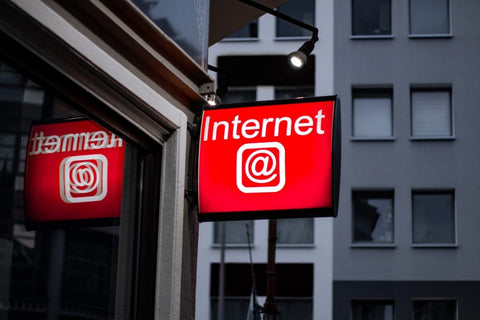Most people get lost in looking for the best way to have the Internet on the road and forget to perform some basic operations that can improve their experience. Even as Nomad Internet strives to keep the traveling Nomad connected, we also look out for your experience. There are some do’s and don’ts that you need to consider for seamless and secure connectivity while traveling.

- Do acknowledge the existence of Wi-Fi Sniffers.
The fact that you are on the bus does not mean you are entirely safe from Wi-Fi sniffers. Thieves never take a break and will seize every opportunity they get to execute their dubious intentions. Wi-Fi sniffers scan their environment to determine available wireless signals and prioritize them based on their strength. If one of the occupants within the bus has one, you can easily become a target. If they happen to get in touch with your Wi-Fi credentials, they will be able to analyze your network activities depending on the capability of their device.
To prevent this from happening, understand the existence of a new technology known as encryption. Encryption is what ensures that data within your network remains safe. You may want to choose a portable Wi-Fi device that integrates encryption as a security mechanism. While on the same concept of encryption, make sure that the sites you visit are encrypted for elevated security.
- Do be wary of shoulder surfers.
Nosy onlookers are capable of stealing your information at a single glimpse. You need to watch out for them. As you surf the Internet and feed data into online forms, make sure that you understand who is around you. Never key in vital details like Bank Account number and passwords with many people surrounding you.
- Do log out when done.
Learn the habit of logging out of portals and applications when not using them. That is a mandatory requirement, especially for apps that hold your sensitive data. In addition, make sure that your smartphone or laptop has a secure password.
- Do visit secure websites.
You can be hacked from just anywhere in the world, even while traveling. There is nothing that can be as frustrating as being unable to use your laptop from another region because you did not follow basic security requirements.
Make a point of visiting secure websites while surfing the Internet. You can easily tell this by looking at the website URL. The web address may either have a padlock icon or start with "https." Browsers like Chrome can also advise on the security status of a website.
- Don’t leave your portable hotspot without a password
Don’t ever use your portable Wi-Fi device without a password. Failure to do so makes it easier for others to auto-connect to your Internet. For most of these devices that do not have an LED panel, you may not tell who is connected unless you log in them via the browser. That is something that most people do not often do.
Make it a habit to regularly check who is connected. If you see a suspicious device, immediately disconnect it. Nomad Internet’s portable routers give you control over the devices connected to it. You can easily remove and add a device as you see necessary.
- Don't forget to switch it off.
Portable Wi-Fi hotspot devices are powered by a battery, and this can drain out. When not using the Wi-Fi, consider turning off your device to save on power. It takes barely two minutes to switch it back on when you need to reconnect.
